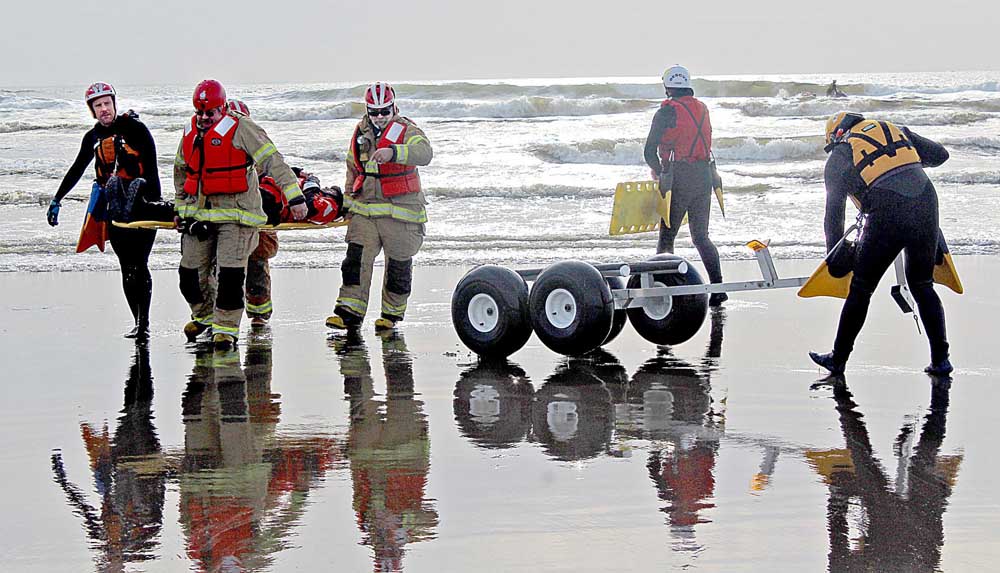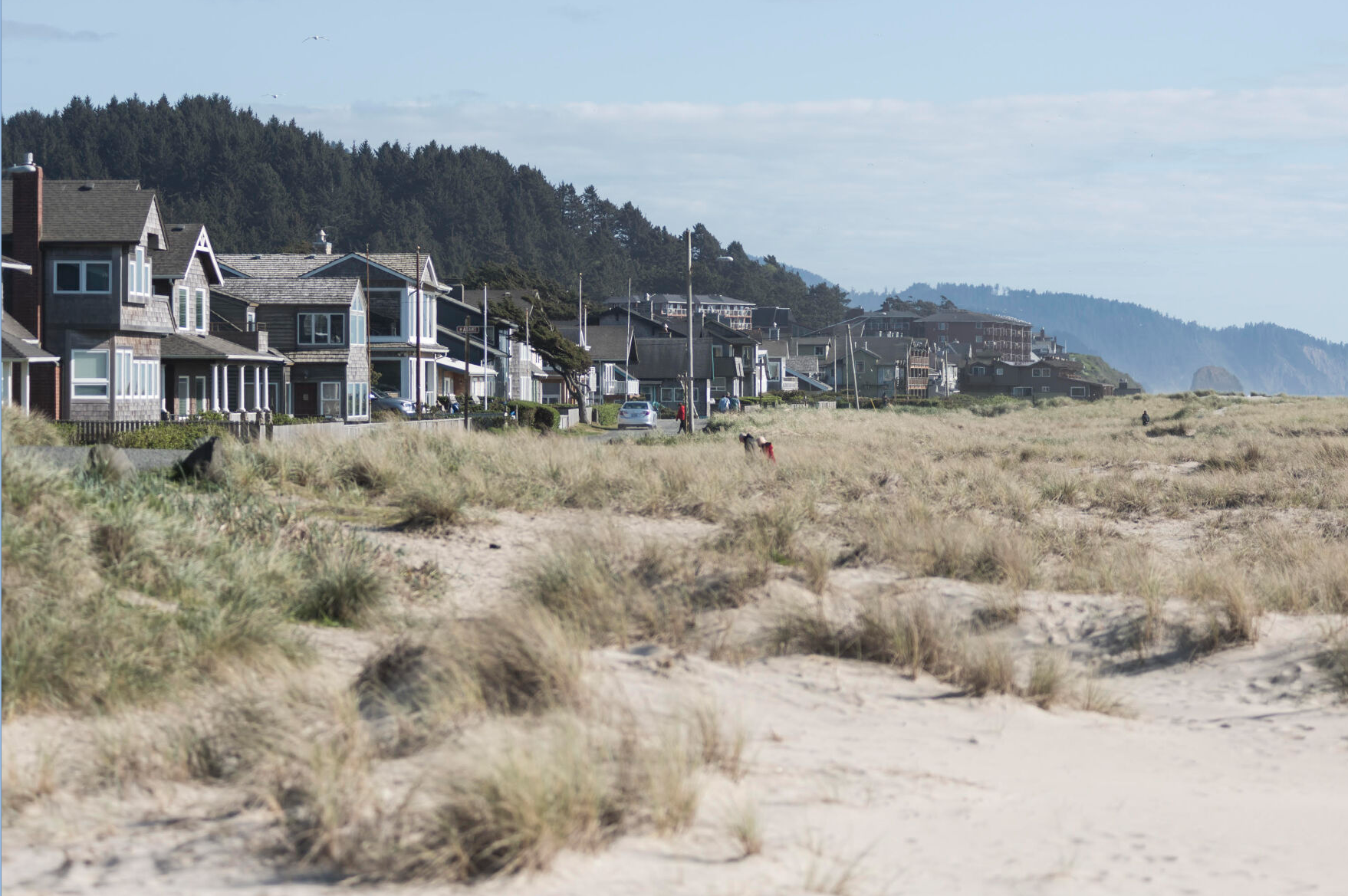Our View: Speak up about ocean dangers
Published 12:15 am Thursday, June 10, 2021

- Practicing for a tragedy that is all too familiar, Pacific County Fire District No. 1 and the South Pacific County Technical Rescue Team ferry a victim from the surf to a waiting ambulance during an annual drill.
Another season, another tragedy on the beach.
Trending
Every year as spring turns to summer, we hope we will get through the busiest visitor season without the loss of a person venturing into the Pacific Ocean.
And just about every year, our hopes are dashed.
Sneaker waves, dangerous currents, frigid water and heavy crushing logs are just some of the dangers lurking in the attractive-looking surf.
Trending
There are warning signs at locations up and down the Washington state and Oregon coasts. But are they enough? They clearly are not heeded by all.
As the U.S. Coast Guard noted some while ago, it is out-of-area visitors who are most at risk because they are “unaware of the unpredictable and extreme dangers posed by beach surf along the Pacific Northwest coast.” Are there better ways to make them aware?
We love our beaches. Their beauty and appearance of tranquility are the reason many people live and work here. With about 43 miles of ocean seashore, the Long Beach Peninsula and Oregon’s North Coast are magnets for hundreds of thousands of inland visitors each year. Our economy relies greatly on our beach and tourists’ fascination with it.
But the surf is dangerous, and Mother Nature can be unforgiving for the unwary. The most recent tragedy was the loss of a 14-year-old boy in Long Beach on the Memorial Day holiday weekend. Innocent fun on the beach morphed into a tragic loss, from which his family will never recover.
Coast Guard personnel and local searchers from law enforcement and rescue agencies spent hours on the beach, in the water and in the air looking for the boy. His family has since continued the search, praying for some degree of closure.
Public comments online reveal how residents struggle with this deadly issue, acknowledging that, “The ocean is huge and extremely active. There are rip currents, sneaker waves and crab holes to fall into.” Some point to a recurring problem with unsupervised teens being turned loose to play on beaches clearly marked as hazardous. Some blame victims or their parents, while many others simply long for ways to end this needless sacrifice of innocent lives.
Although teenage boys are often the victims, this is by no means always the case. The most recent peninsula drowning before this one was of a 23-year-old Olympia man last August. And over the years, some of the saddest cases have involved adults trying to extricate children from danger.
Advice on signs and leaflets should be unambiguous, even though some will go in the water despite any admonitions. So what can be said? Children and teens should never be permitted to go in deeper than their knees. Younger kids should stay within reach of an adult at all times. Parents visiting the beach with small children should buy life jackets for them and insist they are worn. And everyone must avoid logs — if you see any in the water, get out of the surf and move well away immediately.
We’ve previously suggested it is incumbent on residents of southwest Washington and the North Coast to play their part in alerting visitors to dangers. Speaking up and intervening when you observe potentially dangerous behavior takes moxie. No one likes to be told what to do. And in these less-than-tranquil times, where individual freedoms and community obligations sometimes appear as competing values, there is a danger of provoking a less-than-positive reaction.
But which is worse? Saying nothing and watching the anguish of a family as their loved one disappears into the waves? Or speaking up to a stranger and risking a rebuke?
A nonconfrontational way to convey this information is via a low-wattage radio signal — with the frequency posted at all beach access points. This should be implemented to provide safety guidance in at least English and Spanish, along with a summary of beach-driving laws and, when appropriate, clamming rules.
Other issues are evident. Emergencies rarely occur in random locations, but are concentrated in a few predictable places near access points and restrooms. This Memorial Day tragedy was on one of the busiest weekends of the year. But research has shown that most happen on relatively warm 68-degree days in July and August, from Friday afternoons through Sunday. Perhaps beach patrols and outreach efforts can be made feasible and more effective by focusing on these areas and times? There is no excuse for whining that there is no budget for this — we must find the money. We have it within our power to save human lives. We must do so.
Meanwhile, a family mourns and awaits the Pacific Ocean to return the body of a teenage boy.
It must be considered a preventable tragedy.









